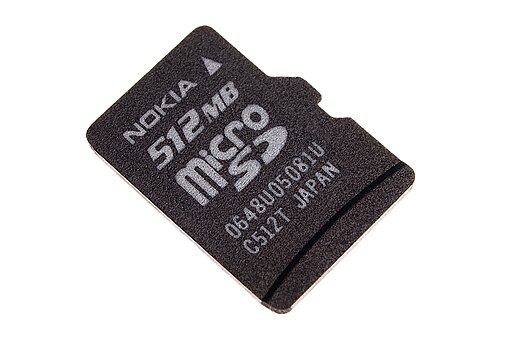Micro SD is a standard format with limited storage capacity, while Micro SDXC offers higher storage capacity, usually 64GB and above.
TL;DR Micro SD card Vs. Micro SDXC
A micro SD card typically has lower storage capacity and is compatible with most devices that support the standard SD format. It offers convenience and flexibility for users who need additional space to store photos, videos, music, or other files.
A micro SDXC card offers much larger storage capacities ranging from 64GB to 2TB (terabytes). This makes it an ideal choice for individuals who require extensive storage capabilities for high-resolution photos and videos or large applications.
What is a Micro SD card?

A Micro SD card is a small, portable memory storage device that is commonly used in smartphones, tablets, cameras, and other electronic devices. It is designed to provide additional storage space for your files, such as photos, videos, music, documents, and applications.
The Micro SD card gets its name from its tiny size; it measures about the size of a fingernail. Despite its small stature, it packs a punch when it comes to storage capacity. Micro SD cards typically range in capacity from 2GB all the way up to 128GB or even higher.
One of the key advantages of using a Micro SD card is its versatility. These little powerhouses can be easily inserted and removed from various devices with compatible slots. This means that you can transfer your files between different gadgets effortlessly.
Micro SD cards are also known for their durability and reliability. They are designed to withstand extreme temperatures and resist shock and water damage. So whether you’re hiking through rugged terrains or taking underwater shots on vacation, rest assured that your precious data will remain safe.
A Micro SD card offers an affordable solution for expanding your device’s memory without having to invest in a brand new gadget with larger built-in storage capacity.
What is a Micro SDXC card?

A Micro SDXC (Secure Digital eXtended Capacity) card is an upgraded version of the Micro SD card. It offers higher storage capacity, making it ideal for devices that require more space to store data, such as high-resolution photos and videos.
Micro SDXC cards are available in sizes ranging from 64GB up to a whopping 2TB. This increased capacity allows users to store large amounts of data without worrying about running out of space.
One key feature of the Micro SDXC card is its compatibility with devices that support the microSDHC format. This means that if your device accepts microSDHC cards, it will most likely be compatible with microSDXC cards as well.
Another important aspect of the Micro SDXC card is its speed class rating, which indicates how quickly data can be written or read from the card. Higher speed class ratings ensure faster performance when transferring files or using applications on your device.
The Micro SDXC card provides greater storage capacity and improved performance compared to its predecessor, making it an excellent choice for those who need ample space for their digital content.
Micro SD card Vs. Micro SDXC card – Key Differences
| Aspect | Micro SD Card | Micro SDXC Card |
|---|---|---|
| Storage Capacity | Typically offers lower storage capacity, often up to 32GB. | Offers higher storage capacity, usually starting from 64GB and can go up to several terabytes. |
| File System Compatibility | Uses the FAT16 and FAT32 file systems. | Utilizes the exFAT file system to handle larger file sizes and volumes. |
| Device Compatibility | Compatible with a wide range of devices, including smartphones, cameras, and older hardware. | May not be supported by older devices, as it uses a different file system. |
| Speed Class | Available in various speed classes, such as Class 2, 4, 6, or 10, indicating minimum write speeds. | Often labeled with UHS (Ultra High Speed) speed classes, providing higher data transfer rates. |
| High-Definition Video | Suitable for recording standard and lower-resolution video formats. | Better suited for recording high-definition video, 4K, and higher-quality formats. |
| Compatibility with SDHC | Can be used with SDHC devices but may have limited storage capacity support. | Generally not compatible with SDHC devices, as it uses the exFAT file system. |
| Device Readiness | Suitable for basic storage needs, including documents, photos, and music. | Best for applications requiring large file storage, high-definition media, and extensive data. |
Image Credits
Featured Image By – PublicDomainPictures from Pixabay
Image 1 By – Asim18, CC BY 3.0, via Wikimedia Commons
Image 2 By – Afrank99, CC BY-SA 3.0 , via Wikimedia Commons








